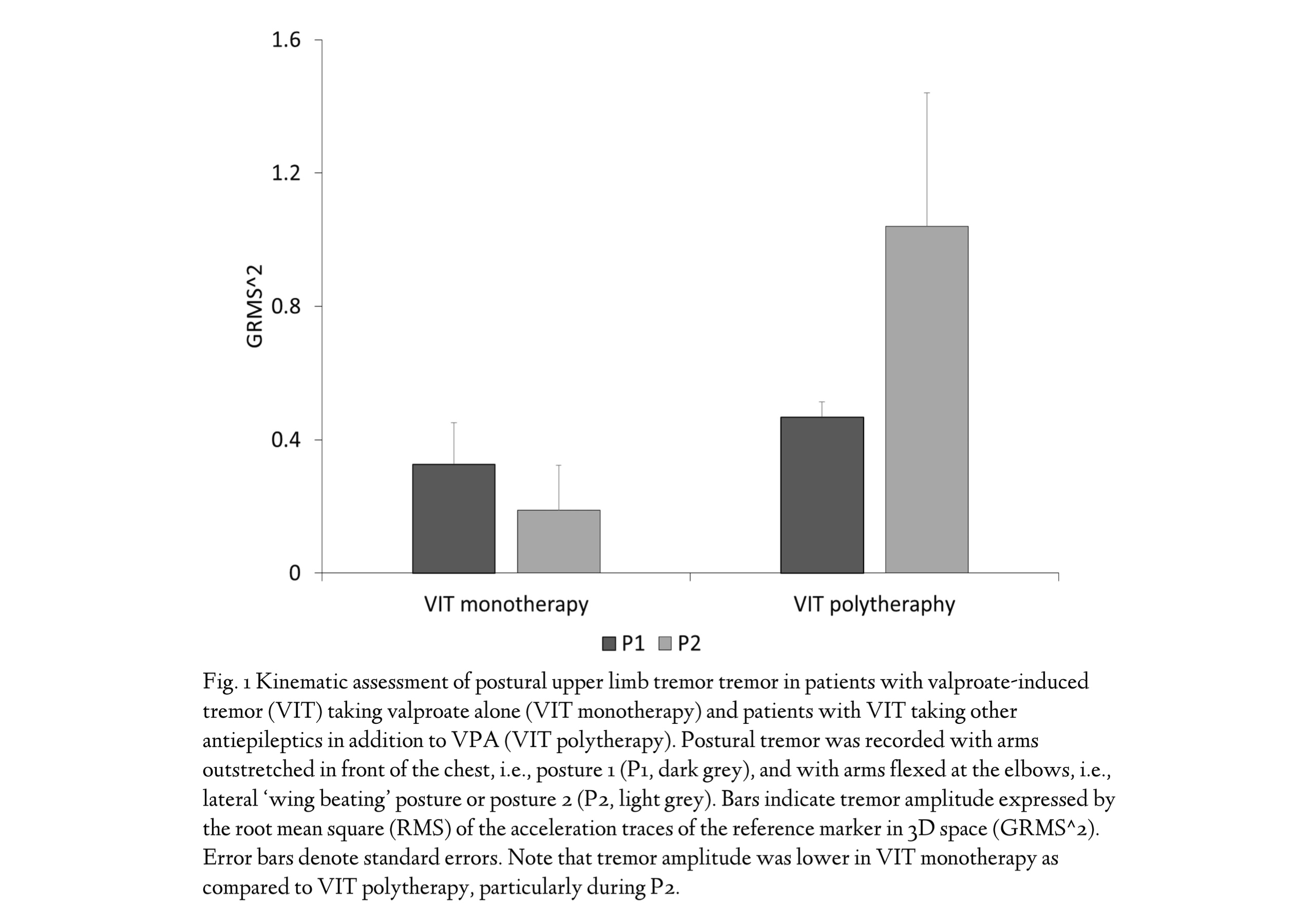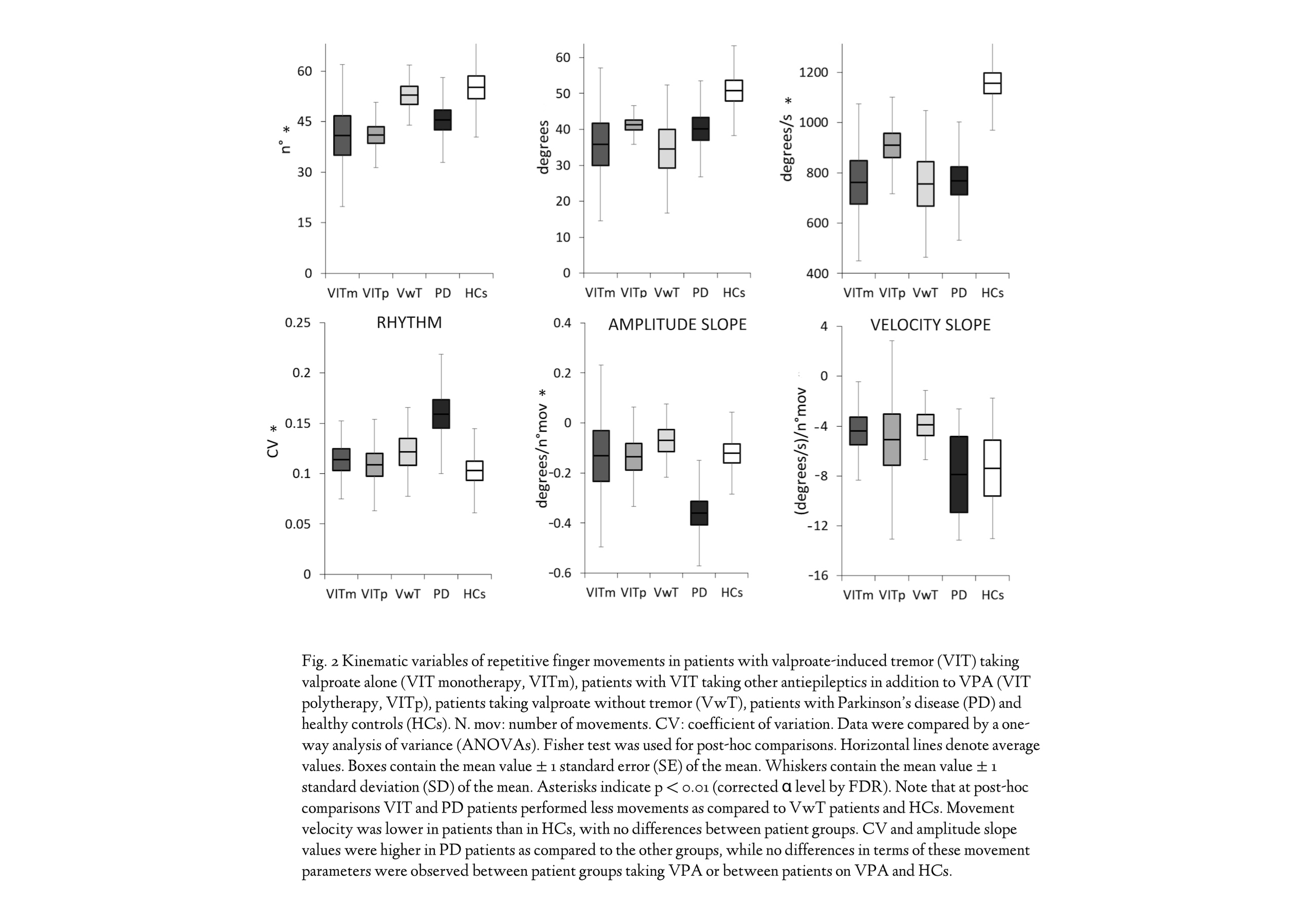Category: Drug-Induced Movement Disorders
Objective: To better characterize clinical and neurophysiological features of valproate-induced tremor in patients with epilepsy and the effect of valproate on the execution of voluntary movements.
Background: To date, only a few clinical and neurophysiological studies have investigated the features of valproate-induced tremor.[1],[2] In addition, little is known about how valproate affects voluntary movements.
Method: We tested 29 patients with valproate-induced tremor (13 taking valproate alone and 16 taking valproate plus other antiepileptic drugs). Patients underwent a standardized neurological examination, video recordings, and kinematic assessment of postural, kinetic, and rest upper limb tremor using a motion analysis system. Movement execution was tested by kinematic assessment of repetitive finger tapping. Data of patients with valproate-induced tremor were compared to those of 13 epileptic patients taking valproate but without tremor, 20 patients with Parkinson’s disease, and 20 healthy controls.
Results: Clinical and kinematic evaluation showed that tremor in patients taking valproate alone was less severe than tremor in patients taking valproate plus other antiepileptics [Figure1]. In addition, all patients taking valproate, regardless of the presence of tremor, performed slower finger tapping as compared to healthy controls, similar to what was observed in Parkinson’s disease patients, although with no sequence effect [Figure2].
Conclusion: Tremor and bradykinesia (movement slowness) are motor signs induced valproate intake[3]. The severity of valproate-induced tremor is exacerbated when valproate is taken in combination with other antiepileptics. Valproate-induced bradykinesia occurs regardless of tremor. The appearance of bradykinesia may precede tremor development in patients under valproate.
References: [1] Morgan JC, Sethi KD. Drug-induced tremors. Lancet Neurol. 2005;4(12):866-876;
[2] Paparella G, Angelini L, De Biase A, Cannavacciuolo A, Colella D, Di Bonaventura C, Giallonardo AT, Berardelli A, Bologna M. Clinical and Kinematic Features of Valproate-Induced Tremor and Differences with Essential Tremor. Cerebellum. 2021 Jun;20(3):374-383.
[3] Perucca E. Pharmacological and therapeutic properties of valproate: a summary after 35 years of clinical experience. CNS Drugs. 2002;16(10):695-714;
To cite this abstract in AMA style:
A. de Biase, G. Paparella, L. Angelini, A. Cannavacciuolo, D. Colella, E. Cerulli Irelli, A. Gialllonardo, C. Di Bonaventura, A. Berardelli, M. Bologna. TREMOR AND BRADYKINESIA ARE TWO UNRELATED SIDE EFFECTS INDUCED BY VALPROATE INTAKE [abstract]. Mov Disord. 2022; 37 (suppl 2). https://www.mdsabstracts.org/abstract/tremor-and-bradykinesia-are-two-unrelated-side-effects-induced-by-valproate-intake/. Accessed May 9, 2025.« Back to 2022 International Congress
MDS Abstracts - https://www.mdsabstracts.org/abstract/tremor-and-bradykinesia-are-two-unrelated-side-effects-induced-by-valproate-intake/


